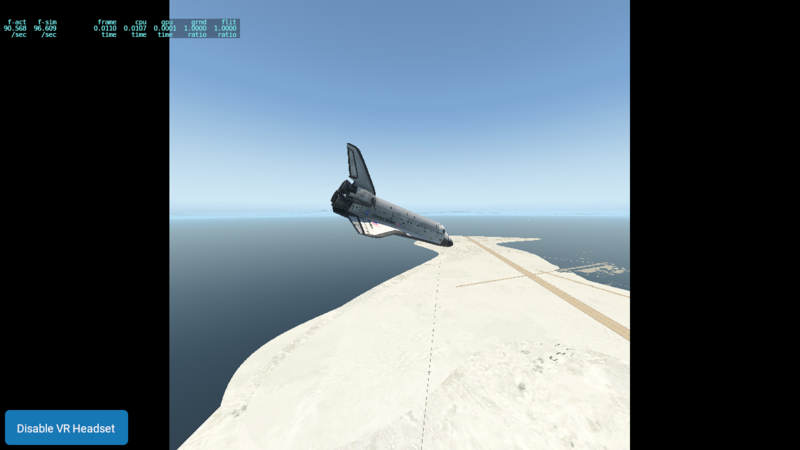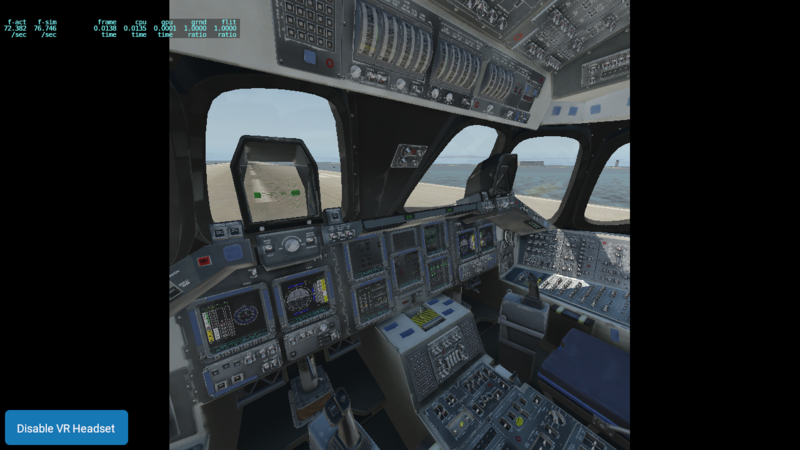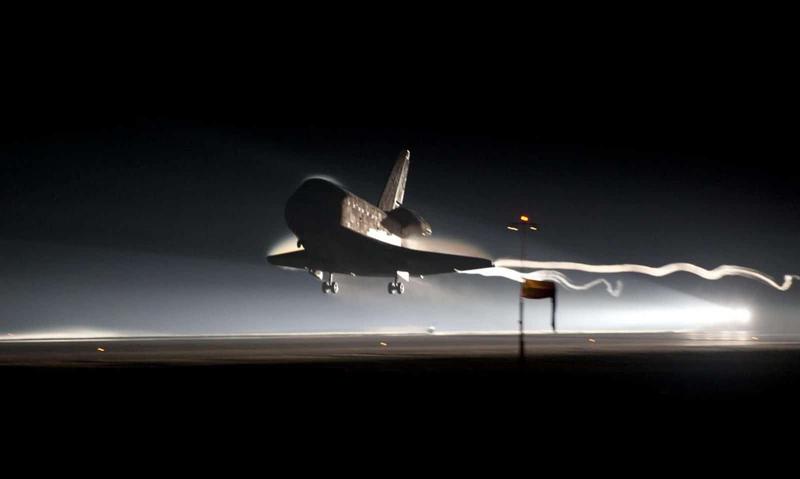In this video, you'll first notice that even though X-Plane labels the landing site as Edwards Air Force Base, it is surrounded by water because I have not loaded the Western U.S. scenery package. These images and video are taken directly from the VR headset as I flew the final approach leg. X-Plane allows the flight from orbit, as well.
The final approach is flown at about 350 MPH resulting in a descent rate of over 10,000 FPM. You can see another video here with an actual Orbiter landing. And click here for a very entertaining presentation on Orbiter operation. In the atmosphere, the Shuttle is basically a controllable free-fall object. Touchdown is made at about 200 MPH.
At :11 in the video I begin the pre-flare at about 2000 feet above ground level (AGL)--raising the nose attitude to exchange energy in the form of speed for slowing the high descent rate. At :28 the landing gear comes down at 400 ft. AGL--it can't come up. At :50 I deploy the drag chute. At :57 I lower the nose wheel for positive steering.
You may also see in the video that I deploy the speed brake--the rudder splits. I tend to fly the entire final approach with the brake deployed. Since there is no power available should I end up short of the runway, I would simply retract the brake to extend the glide. It is nearly impossible to land beyond the runway (should one miscalculate) since there are many aerodynamic methods available to lose altitude, but only one way to keep it: retract the brake.
In the Shuttle, the rudder continues to operate normally even when it is split and splayed out to create aerodynamic drag. This is the Orbiter's speed brake. It is extremely effective and can be deployed along the full range of operation, not just retracted or deployed.
The commander has an indicator showing the degree of deployment.
Again, please note that the view through the VR headset is sharp and clear. It is simply a function of creating and posting the video that resolution is reduced.
True, the Shuttle is no longer flying. But since it is in X-Plane, I'll write about it here in the present tense.
Once in the atmosphere, the Space Transportation System (STS) Orbiter, also known as the Space Shuttle, engages in a series of roll-reversals in order to lose altitude without increasing speed. I demonstrate a roll-reversal in X-Plane.
When wings are level, lift is generated up. That doesn't lead to going down. When the aircraft is knife-edge to the horizon, the wings do not produce lift "up." Thus the descent rate is increased. And as we get lower in the atmosphere, holding the bank angle does result in a turn, and so, reversals are needed.
STS Orbiter




